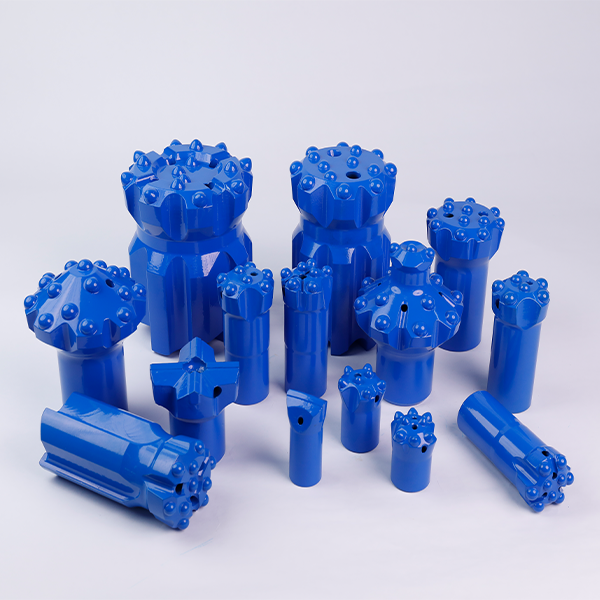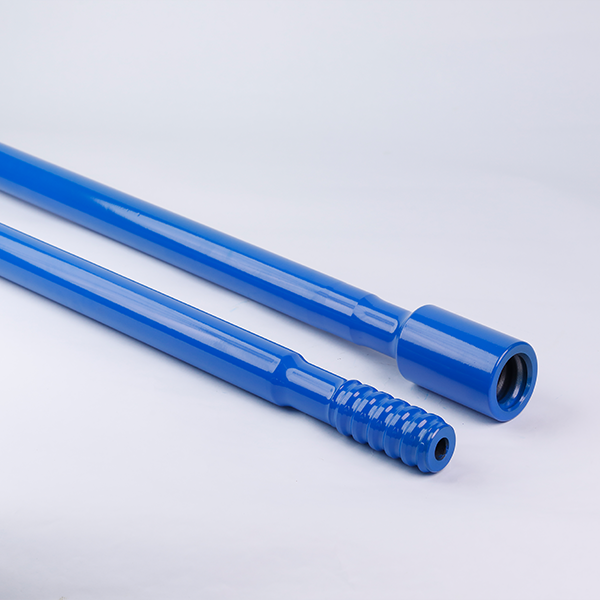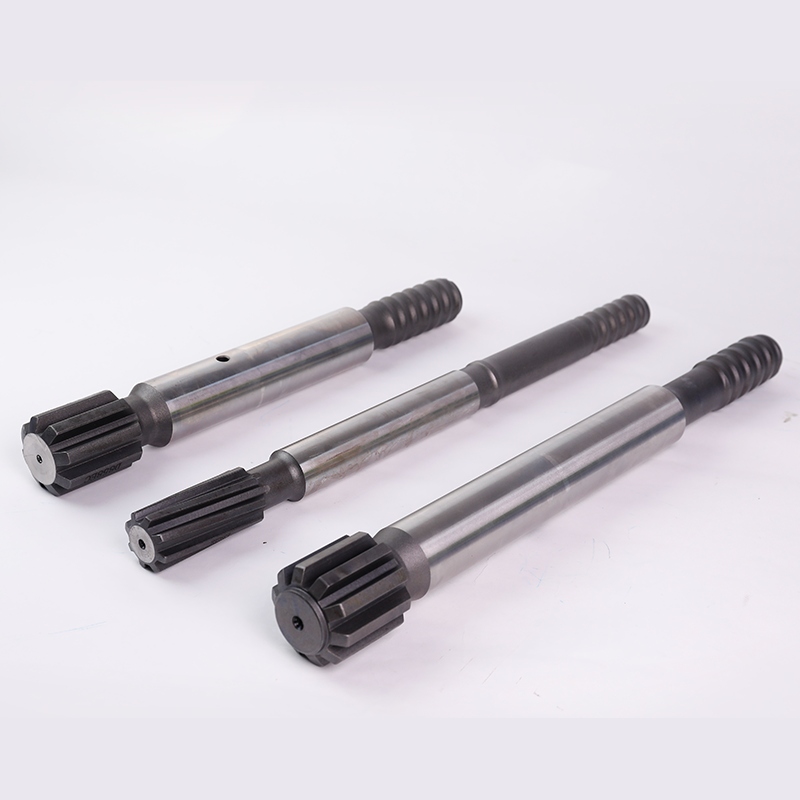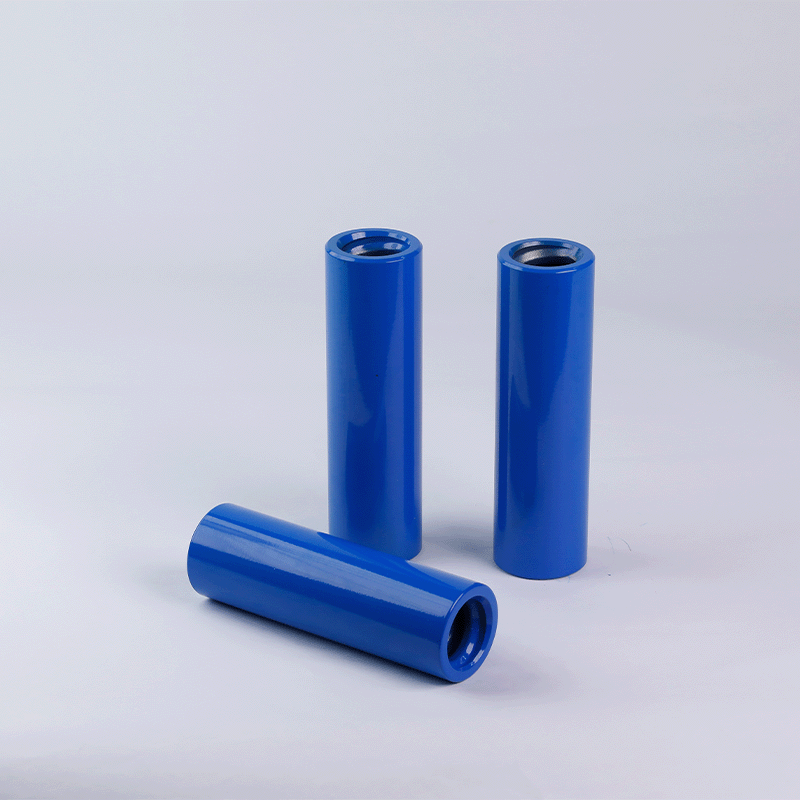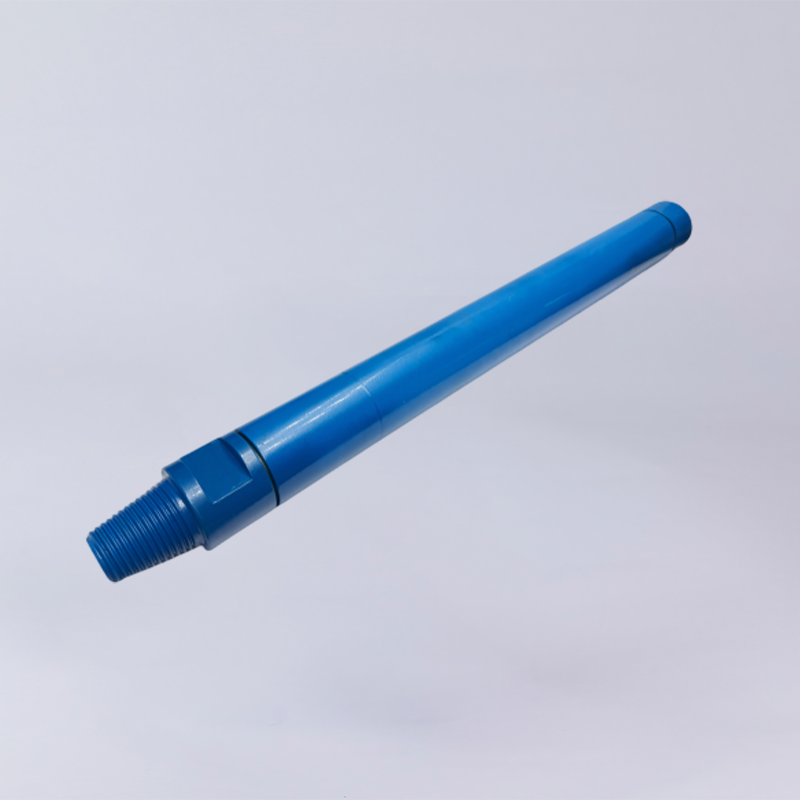In the field of geotechnical engineering, as a key component directly acting on rock formations, the performance of the DTH drill bit directly affects drilling efficiency and project costs. A DTH drill bit consists of multiple components such as water holes, gauge buttons, water grooves, backup buttons, splines, main air holes, slag-discharge grooves, and guide circles. These components work together to determine the overall performance of the DTH drill bit. Due to the different functions of each component, their design principles also vary significantly.Previously we introduced what is the DTH drill bit, this article mainly focuses on several core components, including the carbide surface, water holes, impact end face, splines, and water grooves, and introduces their design principles one by one.
1. Design of the Carbide Surface
As a crucial part of the rock-breaking of the DTH drill bit, the shape design of the carbide surface needs to precisely match different rock formation characteristics.
Convex faces are suitable for hard and highly abrasive rock formations. With their special design, they can reduce the wear of the DTH drill bit carbide button. Although they enable rapid drilling, due to uneven contact forces with the rock formation, it is difficult to control the deviation of blast holes.
A concave face, with a more even force distribution, can be adapted to all rock formations. They perform exceptionally well in medium-hard and homogeneous rock formations. They can not only reduce the deviation of blast holes but also have a good slag-discharging effect.
Flat faces and double-sided faces are specifically designed for high-pressure working conditions. The former enhances the impact force on hard rock formations through a flat structure, while the latter improves rock-breaking efficiency through the cooperation of a double face. Both can effectively reduce the wear of the DTH drill bit.
The center-sunken type is designed for low-and medium-pressure environments as well as soft and fractured rock formations. Through the center-sunken structure, it enhances the stability of the DTH drill bit. While achieving rapid rock-distilling, it reduces the deviation rate of blast holes.
2. Design of the Water Holes
Water holes undertake the dual functions of slag-discharging and cooling. The number and layout of water holes need to take into account the size of the DTH drill bit and the formation conditions. For small-diameter DTH drill bits, one or two water holes can be chosen. Both single and double water holes have their advantages and disadvantages. Double water holes can enhance the cleaning effect at the bottom of the hole, but in soft formations such as clay, they are prone to blockage, which affects the exhaust of the DTH hammer. Therefore, a single water hole structure is generally used in soft formations. For large-diameter DTH drill bits, multiple water holes need to be evenly distributed to ensure the uniform distribution of flushing fluid. While maintaining efficient slag-discharging, it is necessary to avoid weakening the strength of the DTH drill bit due to too many water holes.
3. Design of the Impact End face
The impact end face of the DTH drill bit is subject to high-frequency impacts from the piston for a long time, so the common failure mode is mainly impact fatigue. To improve its service life, multiple measures should be taken in the design: reduce the surface roughness and improve the contact accuracy of components to reduce local stress concentration and stress peaks during impact; rationally adjust the hardness matching relationship between the piston and the impact end face. Since the DTH drill bit is a consumable part, the service life of the piston should be given priority. Surface treatment technology should be used to improve the fatigue strength and fatigue life of the material.
4. Design of the Splines
As a power-transmission component connecting the DTH drill bit and the DTH drill pipe, the design of splines focuses on enhancing reliability and durability. By strictly controlling the fit clearance and uniformity of splines, smooth power transmission can be ensured. Heat treatment processes are adopted to improve the resistance to plastic deformation and impact fatigue. Reducing the surface roughness, improving the contact accuracy, and appropriately increasing the cross-sectional area of splines can effectively improve the structural strength while reducing the risk of wear.
5. Design of the Water Grooves
Water grooves can effectively remove rock debris at the bottom of the hole by guiding the flow of flushing media, reducing the debris barrier between the DTH drill bit and the rock formation, and thus improving the drilling speed. However, cutting water grooves will damage the overall structure of the DTH drill bit and increase the processing complexity and cost. Therefore, in the design, engineering requirements, and economic efficiency need to be comprehensively considered. While pursuing high-efficiency operations, production costs should be reasonably controlled.
6. Conclusion
Every structural design of the DTH drill bit is a combination of engineering practice and theoretical research. The design of core components such as the carbide surface, water holes, impact end face, splines, and water grooves is comprehensively considered around various factors such as rock formation characteristics, working conditions, and project costs.
The carbide surface is designed to adapt to rock formations for efficient rock-breaking, the water holes take into account both slag-discharging and structural strength, the impact end face enhances fatigue resistance, the splines ensure stable power transmission, and the water grooves balance efficiency and cost. These structural designs do not exist in isolation but form an integrated whole through mutual cooperation, jointly determining the drilling quality and service life of the DTH drill bit.
In the context of geotechnical engineering constantly challenging complex geological conditions, a deep understanding of the core structural design principles of the DTH drill bit will provide more solid technical support for efficient and safe construction in the industry.

